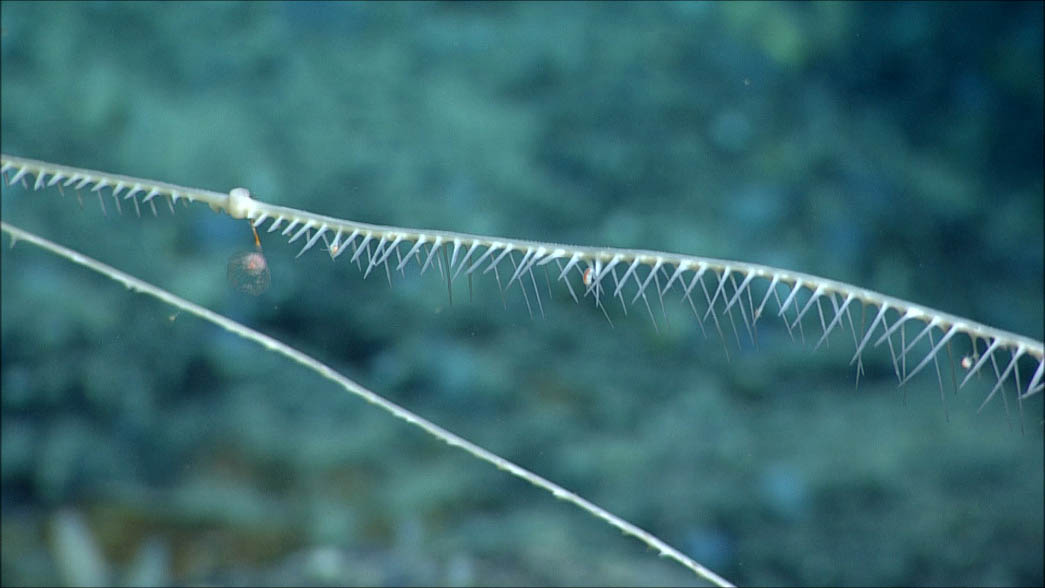Current news
New species of carnivorous sponge discovered - Cladorhiza kenchingtonae
The carnivorous sponge, Cladorhiza kenchingtonae, is approximately 2 meters in length with one meter branches along its length. These microscopic hook-like glass spicules or sponge bones-give the sponge a Velcro-like surface. It feeds on zooplankton and was discovered at a depth of nearly 3000 meters below the ocean’s surface in the Flemish Cap, northeast of the Grand Banks.
Researchers at the Bedford Institute of Oceanography discovered the new species during a research trip on the Canadian Coast Guard Ship Hudson in 2010.
The sponge was named after Dr. Ellen Kenchington of Fisheries and Oceans Canada for her numerous contributions to Arctic and North Atlantic deep sea benthic ecology, biodiversity monitoring and protection. Dr. Kenchington’s work has led to the protection of benthic habitats across the globe.
Our Scientists
Did you know?
- The benthic zone is the ecological region at the lowest level of a body of water such as a lake or ocean.
- Date modified:



